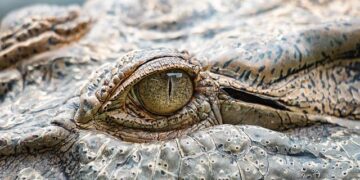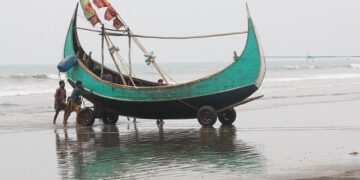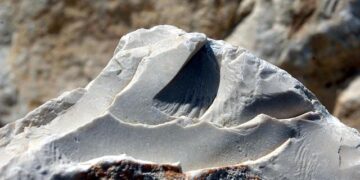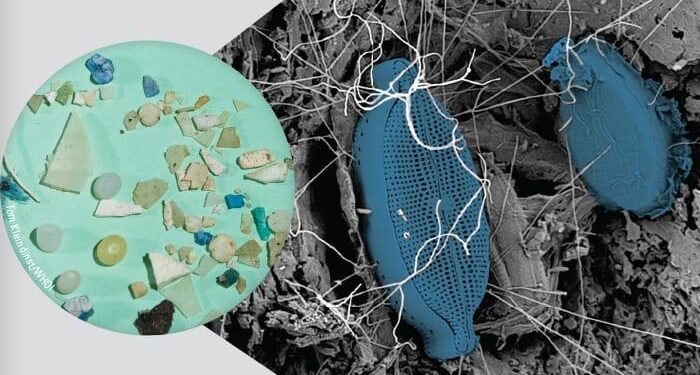A groundbreaking study published in Nature has unveiled the Plastisphere-a newly recognized ecological niche formed by plastic debris within Zostera marina seagrass meadows. This discovery sheds light on how microorganisms colonize and interact with man-made materials in these vital coastal ecosystems. As plastic pollution continues to infiltrate marine habitats, understanding the dynamics of the Plastisphere offers fresh insights into its impact on seagrass communities and the broader marine environment.
Plastisphere Emerges as Critical Habitat for Microbial Communities in Seagrass Meadows
Recent research has illuminated the plastrispheres-microbial biofilm communities colonizing plastic debris-as an unexpected yet vital habitat within Zostera marina seagrass meadows. These artificial substrates serve as micro-ecosystems, fostering diverse populations of bacteria, archaea, and microalgae that differ markedly from those found on natural seagrass surfaces. The plastisphere’s unique physicochemical environment, characterized by altered nutrient dynamics and microhabitat heterogeneity, appears to provide microorganisms with novel niches unavailable elsewhere in the seagrass ecosystem.
Scientists have identified several key functional groups thriving in the plastisphere, which contribute to the overall health and resilience of seagrass meadows by:
- Enhancing nitrogen fixation processes unavailable in native sediment
- Facilitating organic matter degradation through specialized enzymes
- Promoting microbial interactions that support nutrient cycling
The table below summarizes the dominant microbial taxa identified on plastic surfaces compared to natural substrates, underscoring the plastisphere’s role as a distinct ecological niche.
| Microbial Group | Plastic Surfaces | Natural Seagrass Surfaces |
|---|---|---|
| Nitrogen-fixing Bacteria | High abundance | Moderate abundance |
| Hydrocarbon-Degrading Bacteria | Predominant | Rare |
| Photosynthetic Microalgae | Moderate abundance | High abundance |
| Archaea | Diverse and abundant | Less diverse |
Unveiling the Complex Interactions Between Microorganisms and Plastic Debris in Zostera marina Ecosystems
Within the delicate underwater landscapes of Zostera marina seagrass meadows, plastic debris is more than just pollution-it acts as a vibrant and dynamic substrate fostering distinctive microbial communities. These so-called “plastispheres” create unique ecological niches, enabling microorganisms to colonize synthetic surfaces that differ substantially from natural sediments and plant matter. Recent studies reveal that these microbial assemblies are not mere accidental hitchhikers; instead, they consist of specialized bacteria and fungi capable of biodegradation processes, biofilm formation, and chemical interactions influencing nutrient cycling in these coastal ecosystems.
Intriguingly, the interactions within these biofilms extend beyond individual microbes, potentially affecting broader environmental functions. Among the key characteristics defining these plastisphere communities are:
- High species diversity with several taxa uniquely adapted to plastic surfaces
- Enhanced metabolic activity, particularly related to hydrocarbon degradation
- Altered microbial succession patterns compared to surrounding natural substrates
- Potential role in plastic deterioration and nutrient flux within the seagrass environment
This emergent ecological niche underscores the dual role of plastics as pollutants and as unexpected microhabitats that may reshape microbial ecology in marine seagrass meadows.
| Microbial Function | Example Taxa | Ecological Impact |
|---|---|---|
| Plastic degradation | Rhodococcus spp. | Breakdown of polymer chains, reducing plastic persistence |
| Biofilm formation | Pseudoalteromonas spp. | Facilitates colonization and nutrient exchange on plastic surfaces |
| Nitrogen cycling | Azotobacter spp. | Enhances nitrogen availability in the rhizosphere |
Strategies for Monitoring and Mitigating Plastic Pollution to Preserve Marine Microbial Diversity
Effective efforts to combat the growing threat of plastic pollution in marine environments demand a multifaceted approach. One of the most crucial ways to monitor plastic accumulation and its impact on marine microbial communities is through the integration of advanced remote sensing technologies and in situ sampling techniques. These approaches allow researchers to map plastic hotspots within seagrass meadows, such as those dominated by Zostera marina, and assess the diversity shifts in the plastisphere-the specialized microbial communities colonizing plastic debris. By deploying autonomous underwater vehicles (AUVs) equipped with sensors sensitive to microplastic particles, scientists can gather real-time data on pollution levels, enabling quicker responses to emerging ecological threats.
Mitigation strategies must combine policy enforcement with community-driven conservation practices. Critical measures include:
- Establishing marine protected areas (MPAs) targeting vulnerable seagrass habitats to limit plastic runoff.
- Enhancing waste management infrastructure in coastal regions to reduce marine debris input at the source.
- Promoting biodegradable alternatives to conventional plastics that foster less harmful microbial colonization.
- Engaging local stakeholders through education and participatory cleanup initiatives.
| Monitoring Method | Application | Impact on Microbial Diversity |
|---|---|---|
| Remote Sensing | Plastic hotspot identification | Targets high-risk zones for detailed microbial analysis |
| Metagenomic Sequencing | Microbial community profiling | Reveals shifts in plastisphere composition |
| Citizen Science | Coastal debris collection data | Augments large-scale datasets, enhances awareness |
Closing Remarks
The discovery of the plastisphere as a distinct ecological niche within Zostera marina seagrass meadows sheds new light on the complex interactions between microplastics and marine ecosystems. As researchers continue to unravel how these synthetic habitats influence microbial communities, the findings underscore the broader environmental implications of plastic pollution in coastal waters. This emerging insight not only deepens our understanding of seagrass meadow ecology but also highlights the urgent need for addressing plastic waste to protect these vital marine environments.































